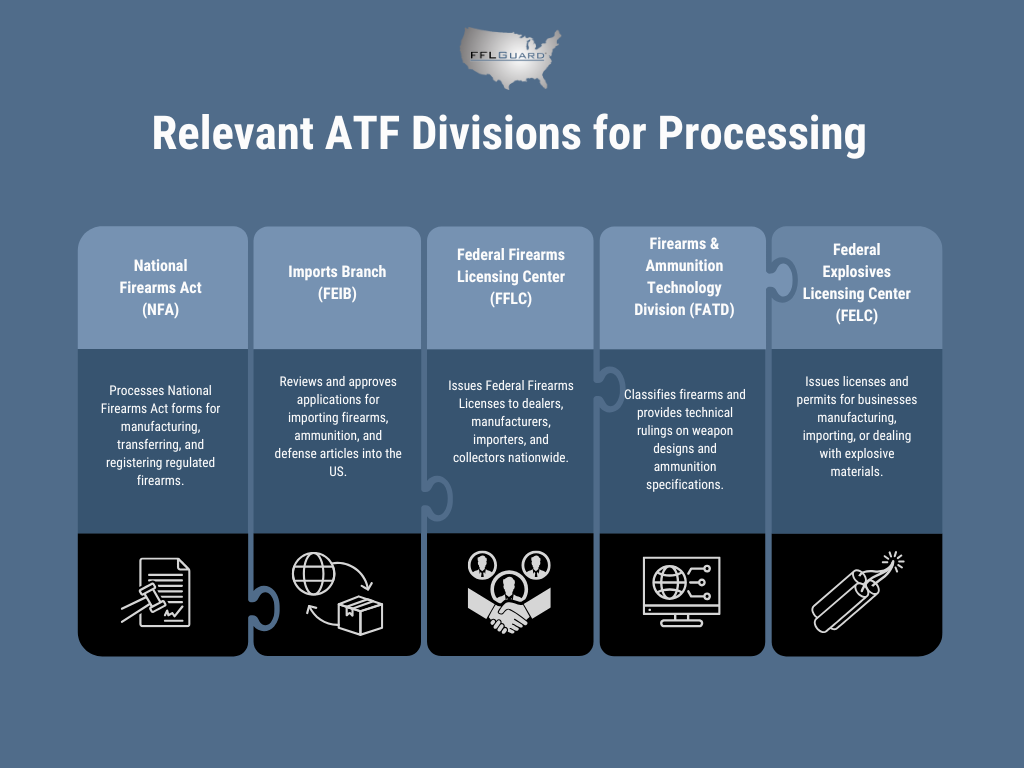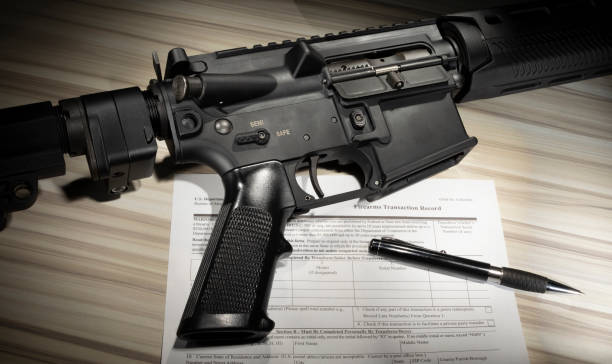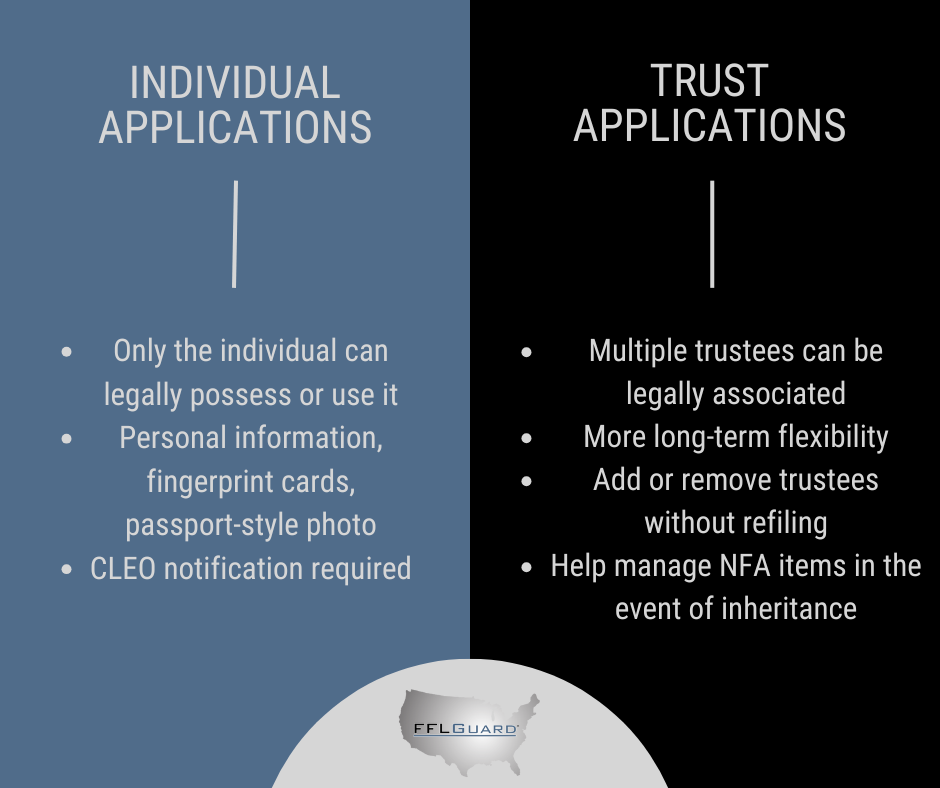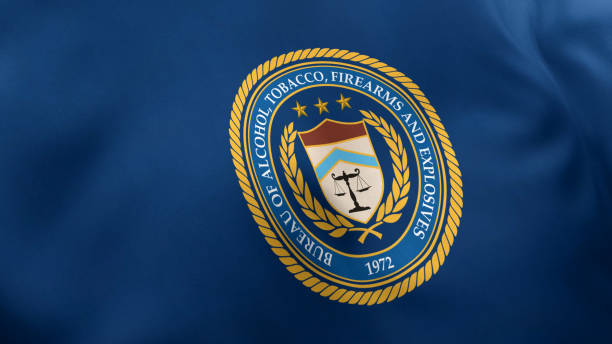The Short Answer: ATF processing times have improved in early 2025 thanks to system upgrades and wider eForm adoption, with electronic submissions averaging 1 to 59 days and paper forms taking up to 3 months. However, the One Big Beautiful Bill Act, which will eliminate the $200 NFA tax, is expected to reduce ATF staffing and drive application volume sharply upward when it goes into effect in January 2026. As a result, many experts predict significant delays in the future, even for ATF eForms.
Understanding ATF approval times is a necessity for Federal Firearms Licensees (FFLs) and law-abiding citizens involved in regulated firearms transactions. The Bureau of Alcohol, Tobacco, Firearms and Explosives (ATF) processes thousands of applications and registration forms each year through two main channels: their electronic filing (eForm) system and traditional paper submissions. These forms cover everything from FFL applications and suppressor applications to tax stamps and Special Occupational Taxpayer registrations.
The processing timeline affects business planning, inventory management, and customer service for FFLs, while also impacting individual gun owners waiting on form approvals. This guide examines current processing times, factors affecting application process speeds, and strategies for navigating the ATF’s electronic form system effectively. Knowing what to expect as an FFL holder helps establish realistic timelines for your firearms-related transactions.
Understanding ATF Form Types and NFA Processing Times
The ATF uses various ATF forms for different firearms transactions and transfers. Each registration form serves a specific purpose and has distinct processing times for both eForm and paper form submissions.
Division/Branch | Key Focus | Related Forms | Primary Functions |
NFA Division | NFA Firearms, Destructive Devices | Forms 1, 3, 4, 5 | Regulate NFA item transfers, registrations |
Imports Branch (FEIB) | Imports | Forms 6, 6A | Approves legal importation of firearms/ammo |
FFLC | FFL Licensing | Form 7 | Issues and manages FFLs |
Firearms & Ammunition Technology Division (FATD) | Technical Classification | Impacts multiple forms | Determines firearm classification/status |
Federal Explosives Licensing Center (FELC) | Explosives | Forms 5400.13/16 | Manages explosives licensing & background checks |
ATF Form Processing Times
Current ATF processing times vary significantly between electronic and paper submissions, with the eForm system consistently processing faster across most form categories. These timeframes represent the average processing times as of July 2025 for properly completed applications and serve as essential planning benchmarks for FFLs managing compliance operations and customer expectations.
- Form 1: Application to Make and Register a Firearm
- Paper Form: 23 days
- eForm: 10 days
- Form 2: Notice of Firearms Manufactured or Imported
- Paper Form: 6 days
- eForm: 2 days
- Form 3: Application for Tax-Exempt Transfer (SOT) –
- Paper Form: 6 days
- eForm: 2 days
- Form 4 Trust: Tax Paid Transfer and Registration
- Paper Form: 48 days
- eForm: 13 days
- Form 4 Individual: Tax Paid Transfer and Registration
- Paper Form: 48 days
- eForm: 9 days
- Form 5: Tax-Exempt Transfer and Registration of National Firearms Act (NFA)
- Paper Form: 13 days
- eForm: 2 days
- Form 6: Firearm Importation Applications
- Paper Form: 31 days
- eForm: 24 days
- Form 6 NIA: Temporary Importation by Nonimmigrant Aliens
- Paper Form: 24 days
- Form 7: Application for Federal Firearms License (FFL)
- Paper Form: 60 days
- Form 9: Permanent Exportation of Firearms
- Paper Form: 3 days
- eForm: 1 day
- Form 10: Registration Form for Government Entity Firearms
- Paper Form: 17 days
- eForm: 6 days
- Form 3311.4: Application for Alternate Means of Identification of Firearm(s) (Marking Variance)
- Paper Form: 30 days
- Form 5320.20: Interstate Transport of NFA Firearms
- Paper Form: 7 days
- Form 5400.13/5400.16: Application for Explosives License or Permit (FEL/FEP)
- Paper Form: 3 months
- Form 5400.28 Employee Possessor Questionnaire (EPQ)
- Paper Form: 3 months

Understanding ATF Wait Times: Impact and Contributing Factors
The ATF’s processing times significantly affect both the firearms industry and individual buyers. These wait times stem from several interconnected factors, while creating widespread impacts across the sector.
Key Factors and Effects
- High Application Volume: The ATF faces an ever-increasing number of NFA applications and processing time delays for firearms and NFA items, creating processing bottlenecks
- Resource Constraints: Limited NFA branch staffing and budget allocation affect the agency’s processing capacity
- Regulatory Requirements: Complex federal law compliance checks and mandatory background check processes add necessary but time-consuming steps
- Business Impact: Dealers face operational challenges when wait times affect inventory management and sales cycles
- Financial Considerations: Extended approval times can create cash flow issues for dealers and affect purchasing decisions for law-abiding citizens
- Compliance Challenges: Time-sensitive transactions require careful planning around anticipated processing delays
- Transaction Planning: Both dealers and gun owners must factor these average wait times into their acquisition strategies for suppressors, NFA firearms, and related accessories
The combination of these factors creates a complex approval process where delays can cascade through the entire firearms acquisition system.

How Recent Legislation Might Impact NFA Wait Times in 2026
The One Big Beautiful Bill Act (H.R. 1), signed into law on July 4, 2025, eliminates the $200 NFA tax stamp for suppressors, short-barreled rifles, short-barreled shotguns, and Any Other Weapons (AOWs) starting January 1, 2026. This removes the financial burden for these items, but does not change the registration, background checks, paperwork, or ATF approval requirements.
The same legislation also cut ATF’s budget, reducing staff in the already overloaded NFA Division. In 2024, the NFA division processed more than 1.4 million NFA applications and facilitated over 4.7 million firearm transfers. With no tax revenue to justify staffing and demand expected to increase, it is predicted that wait times could extend from months to years once the tax change takes effect.
ATF Forms: Key Differences Between Trust and Individual Applications
When submitting ATF forms for NFA items, such as suppressors, short-barreled rifles, or machine guns, the process differs depending on whether the applicant is an individual or a legal entity like a trust. For individual applicants and each partner, officer, or trustee for an entity, the ATF requires information including:
- Fingerprint cards
- A passport-style photo
- Notification to the local Chief Law Enforcement Officer (CLEO)
This CLEO notification must be submitted at the time of application and is purely informational, since local law enforcement does not have the authority to approve or deny the request. The requirement helps maintain transparency between federal agencies and local jurisdictions regarding NFA item transfers, whether applying as an individual or through a legal entity such as a trust.
Each NFA item must be registered solely to that individual or entity, meaning those that have NOT submitted the required documents to the FBI may only use the NFA firearm under the direct supervision of the individual or partner, officer, or trustee of the entity.
Applying as a trust allows multiple trustees or members to be legally associated with the NFA item, providing more flexibility. Trust applications also require personal information and CLEO notifications for each responsible person listed. However, trusts are a legal entity and thus do not dissolve upon a member’s death, and they can help manage NFA items in the event of inheritance or incapacitation. A key advantage of using a trust is the ability to add or remove trustees without needing to refile with the ATF, as long as the trust remains compliant.
The same core ATF forms are used for each applicant type, but the documentation requirements differ. For example, trusts must include a copy of the trust document and any amendments. Whether applying as an individual or trust, the ATF’s background check and approval process still applies, but trusts offer more long-term flexibility for those planning to share or pass down their NFA items.

Avoid ATF Processing Delays
Processing time for ATF form submissions depends heavily on accuracy and preparation. For faster approvals, submit all paperwork through electronic filing when available, complete forms with precise attention to detail, and respond promptly to any ATF requests for additional information.
To avoid common delays:
- Double-check that all required fields are completed
- Include clear, high-quality fingerprints and photographs on FBI Form FD-258
- Verify that all responsible persons are properly documented
- Maintain consistent contact information throughout forms
- Have zoning approvals and business documentation ready
Understanding ATF wait times and processing requirements is essential for successful firearms transactions in today’s regulatory environment. While electronic submissions consistently outperform paper applications across most form types, proper preparation remains the key to avoiding costly delays. Whether you’re an FFL managing business operations or an individual navigating NFA applications, factoring these processing times into your planning helps set realistic expectations and ensures compliance with federal regulations. FFLGuard’s team of former ATF investigators and industry experts can guide you through the approval process for NFA applications, conduct pre-submission reviews, and help prevent costly delays.
Recent legislation has created uncertainty around ATF wait times and what FFL transactions will look like in the future, and it’s never been more important for FFLs to prepare their businesses for the future. FFLGuard‘s cooperative legal and compliance program has been safeguarding and educating FFLs in the United States since 2008. Our professionals work with FFLs around the country to help them remain in federal and state compliance, even as those regulations change. Whether you’re opening a new gun store or maintaining existing operations, FFLGuard‘s firearms-specific counsel and subject matter experts will guide you through ATF compliance requirements. Join FFLGuard to learn more about our service plans and Contact Us with any questions.

